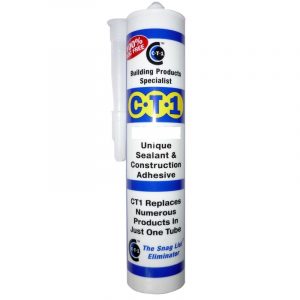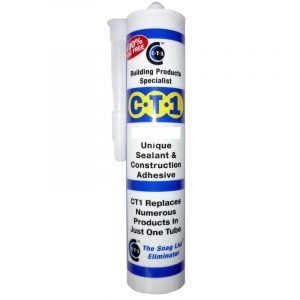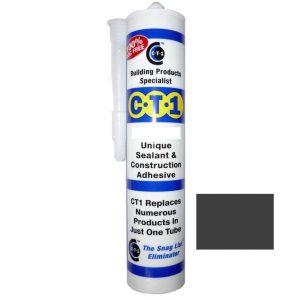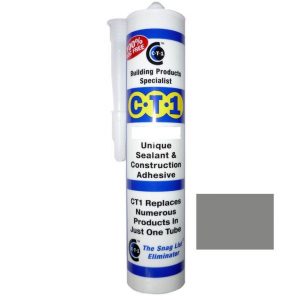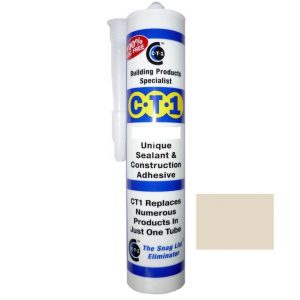Any builder or at-home DIY’er will know what it means to seal or bond material. But if you are just starting your DIY journey, or need some further information on sealing and bonding, here is the ultimate guide to help.
Firstly, its important to explain what it means to seal or bond. Sealing is where a substance is used to be able to fill a space in between two or more materials providing a barrier or coating. Whereas bonding is where you stick two materials together. Both of these actions can be done using only CT1 Adhesive. It can be used in baths, showers, kitchens, guttering and pretty much anywhere else you can think of using it.
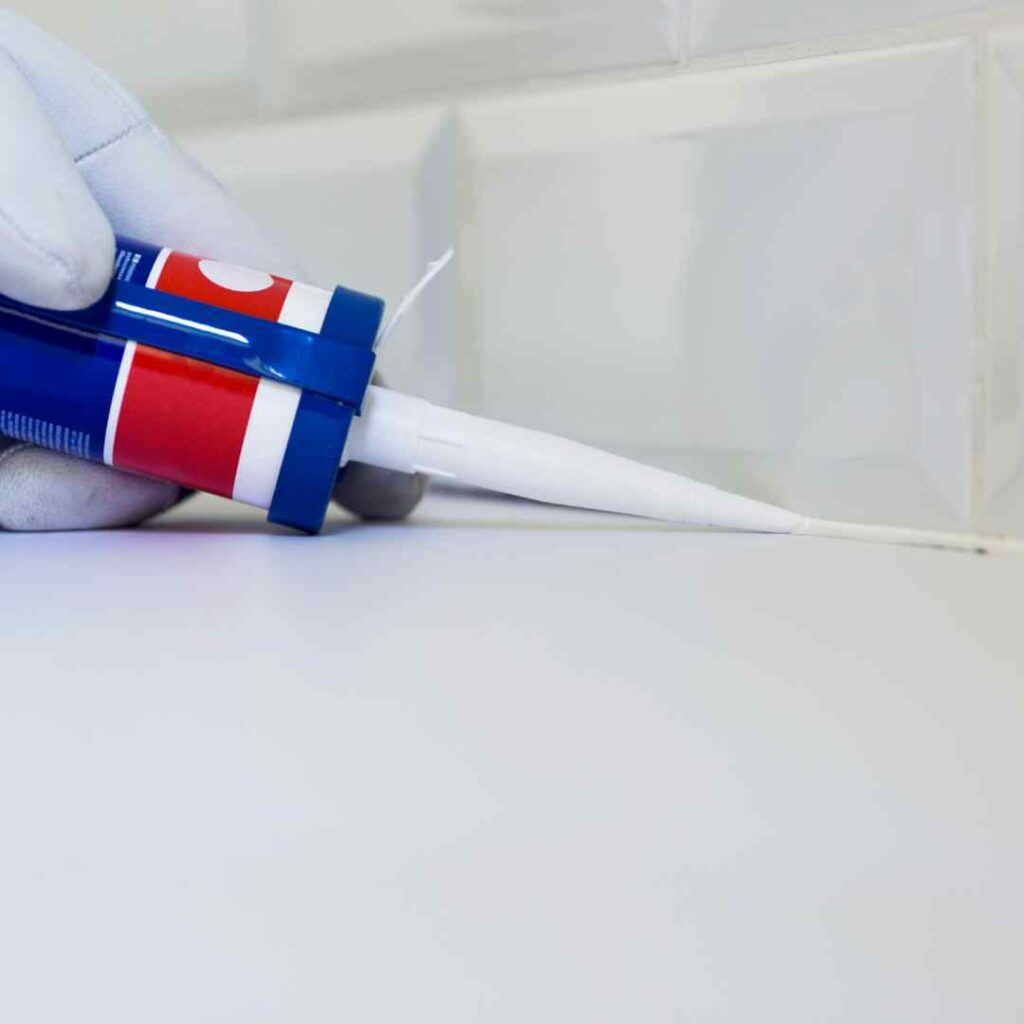
What Is CT1?
CT1 is an industry favourite adhesive as it will successfully bond and seal a vast range of materials together including:
- All metals (including lead)
- Glass
- Mirrors
- All woods
- MDF
- Polystyrene
- Fiberglass
- Tiles
- Concrete
- Most stones (without staining)
- Most synthetic materials
- Plastics (excluding PP, PE and PTFE)
What Are The Benefits Of CT1?
CT1 is popular due to its diverse capabilities. CT1 is the only product in the market with TRIBRID® Technology, making it 360% stronger than a traditional Hybrid Polymer. As well as its excellent resistance to chemicals, take a look at the other benefits CT1 has to offer:
- Excellent colour retention
- Environmentally compliant
- Moderate resistance to fungal and bacterial growth
- UV resistant
- Excellent resistance to vibration
- Can be used in all salt-water environments
- Instant repair and bonding with fibre glass and carbon fibre materials
- Odourless and contains no solvents
- Does not shrink
How To Use CT1 Sealant?
The directions of use are as followed:
- Ensure the cartridge has been stored at room temperature
- Cut the cartridge at the nose
- Cut off the nozzle at the desired dimensions
- Place the sealant in a Mastic Gun
- Apply onto a clean, degreased surface
When To Use CT1 Sealant?
You can use CT1 sealant for a number of different internal and external applications. Some common applications of CT1 are to seal window frames, stick tiles to walls, seal around a bath and even fix a leaky roof, the possibilities are endless. You can view a full product application guide here.
What Colours Are Available?
At Cut Plastic Sheeting, we offer CT1 in five different colours:
-
VIEW

CT1 Sealant & Construction Adhesive – Clear
The ultimate solution for sealing and adhesion. Available in a clear finish.£12.71 inc. VAT £10.59 ex. VATView Product -
VIEW

CT1 Sealant & Construction Adhesive – White
The ultimate solution for sealing and adhesion. Available in a white finish.£12.71 inc. VAT £10.59 ex. VATView Product -
VIEW

CT1 Sealant & Construction Adhesive – Black
The ultimate solution for sealing and adhesion. Available in a black finish.£12.71 inc. VAT £10.59 ex. VATView Product -
VIEW

CT1 Sealant & Construction Adhesive – Silver
The ultimate solution for sealing and adhesion. Available in a silver finish.£12.71 inc. VAT £10.59 ex. VATView Product -
VIEW

CT1 Sealant & Construction Adhesive – Beige
The ultimate solution for sealing and adhesion. Available in a beige finish.£12.71 inc. VAT £10.59 ex. VATView Product
FAQ's
You can indeed paint on CT1 but it must be fully cured beforehand. You should only use water-based paints and should test an area before hand.
CT1 has a shelf life of 18 months.
CT1 should not be used on/with strong acids and the chemical compound Alkali.
Unfortunately, CT1 does not work with Polypropylene.
Removing sealant can be extremely difficult because of the way the adhesive is made. A strong silicone sealant remover is required in order to easily remove the silicone and any remaining residue.
CT1 will take approximately 25 to 30 minutes to dry.
For more information on Acrylic, Perspex, MDF, Dibond and Polycarbonate please visit our Guide and Blog sections of the website.
Cut Plastic Sheeting are based on the south Coast in Ivybridge, Devon UK. We have a full manufacturing facility which enables us to offer Cut To Size Acrylic as well as Cut To Size MDF. Shop our full range of products, including our Clear Acrylic, coloured acrylic and more recent MDF Wood Sheet ranges.
Our Team are always here to help with any enquiry, please send us an email or for more urgent needs give us a call – Contact Us
